How to Fix KB5011048 Fail to Install on Windows 11/10?
When you attempt to install Microsoft updates on your computer, you might encounter an error indicating that Microsoft KB5011048 ‘failed to install’. This message signifies that the update was downloaded, but the installation process on your device was unsuccessful. Common causes of this issue include insufficient disk space, compatibility problems, and interference from antivirus software.
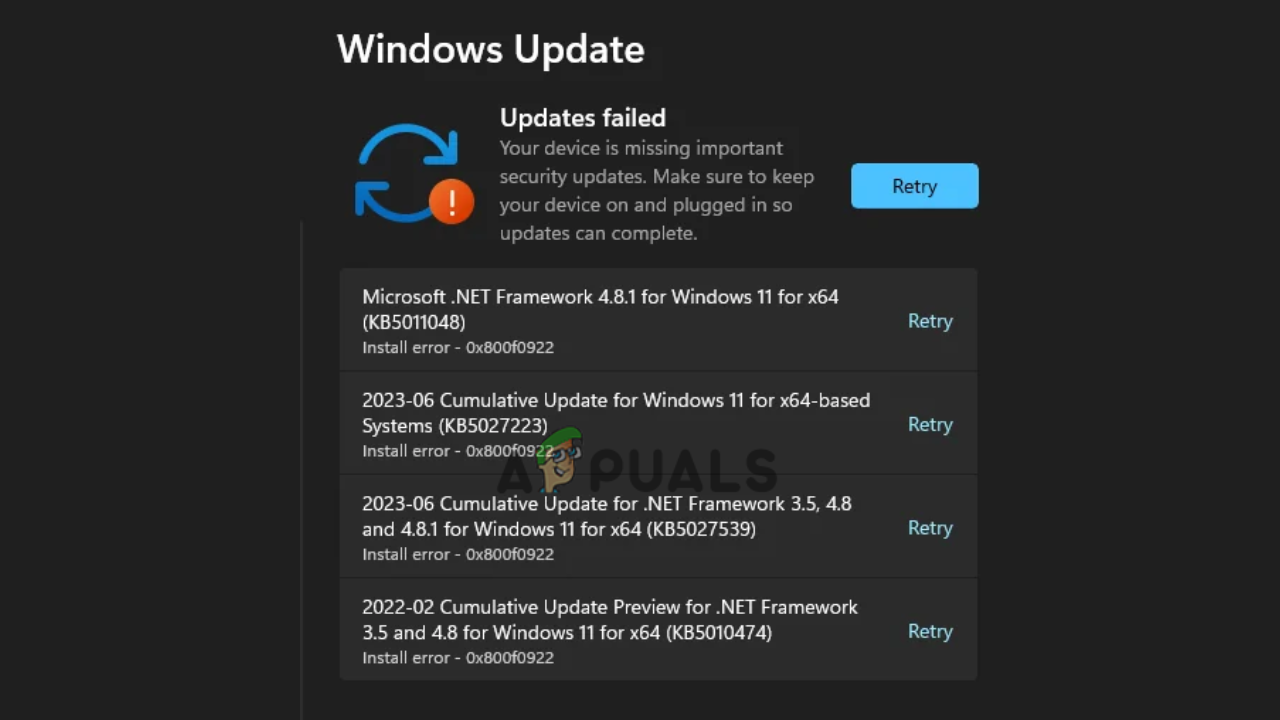
To address this, you should first restart your computer and run the built-in troubleshooters to identify any persistent issues. If the problem remains unresolved, follow the solutions below:
1. Free up Disk Space
Lack of sufficient free disk space can prevent the KB5011048 update from installing. To facilitate a successful installation, create more space on your device through these steps:
- Run the Disk Cleanup tool.

Free up Disk Space - Delete temporary files.
- Move files and documents to cloud storage.
- Uninstall apps and programs that are no longer needed.
- Delete any large files that are redundant.
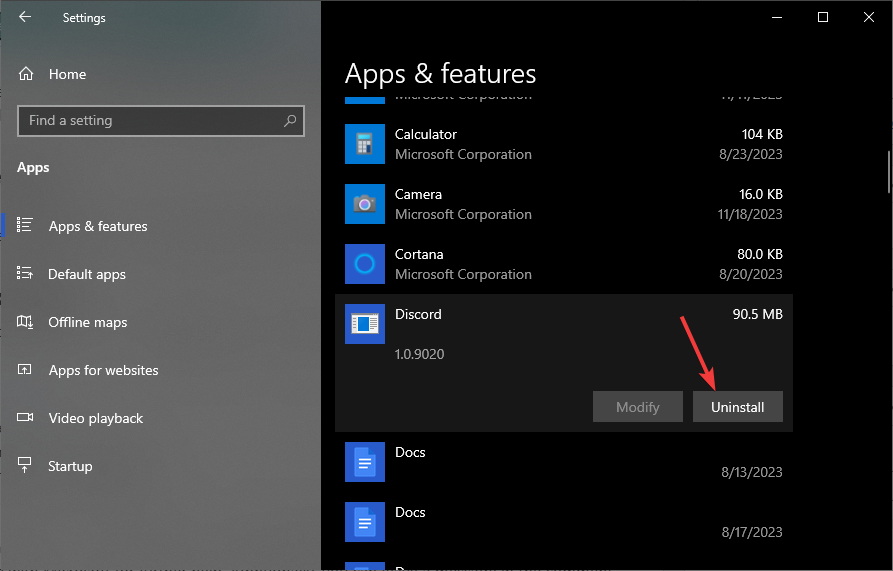
Free up Disk Space
2. Run the Windows Update Troubleshooter
The Windows Update Troubleshooter can diagnose and rectify problems associated with Windows updates. If you’re having trouble with the KB5011048 installation, using this tool might help.
- Click the Windows button and open Settings.
- Go to Update & Security and select Troubleshoot.
- Select Additional troubleshooters from the right-side panel.

Run the Windows Update Troubleshooter - Choose Run the troubleshooter under Windows Update.
- Wait for the troubleshooter to identify any issues with the Windows Update components.
- Follow the on-screen instructions to apply any recommended fixes.
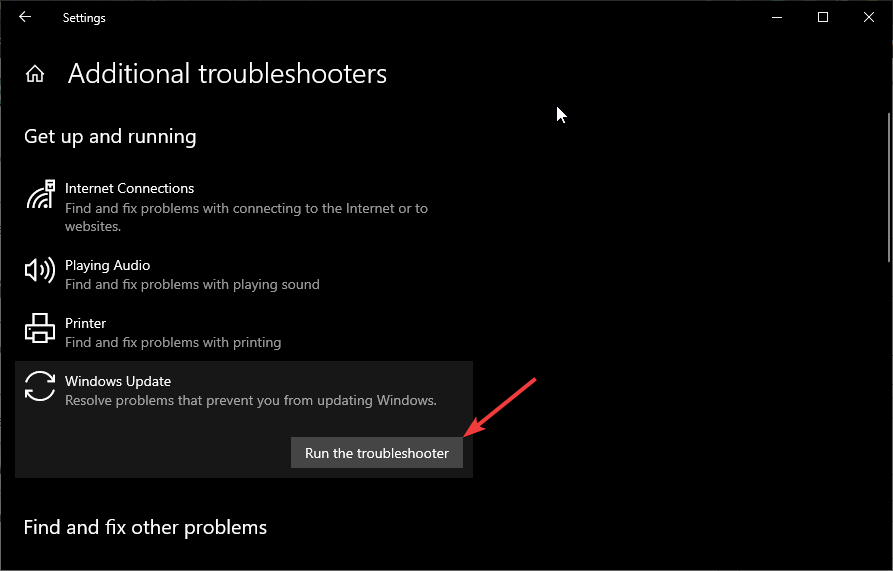
Run Windows Update Troubleshooter
3. Repair Corrupted System Files
The System File Checker (SFC) can search for and repair missing or corrupted system files in the Windows operating system. The Deployment Image Servicing and Management (DISM) tool can download fresh system files from Windows servers to replace damaged ones. Running these two scans can help rectify the error impeding the KB5011048 update installation.
- Search for Command Prompt, right-click, and choose Run as administrator.
- Type the following command in the Command Prompt window and hit Enter:
sfc /scannow

Repair Corrupted System Files - Allow the System File Checker time to scan and mend corrupt files, then reboot your computer to implement the changes.
If problems persist, execute the commands listed below, pressing Enter after each:
Dism.exe /online /Cleanup-Image /checkhealth Dism.exe /online /Cleanup-Image /scanhealth Dism.exe /online /Cleanup-Image /Restorehealth

4. Reset Windows Update Components
Resetting Windows Update components involves clearing the cache and refreshing related components potentially causing update failures like KB5011048’s. This process requires stopping services, renaming or deleting certain files, and restarting the services.
- Open Command Prompt as an administrator.
- Use the following commands to stop BITS and other related services, pressing Enter after each:
net stop bits net stop wuauserv net stop cryptsvc

- To delete qmgr*.dat files, type the following command and press Enter:
Del "%ALLUSERSPROFILE%\Application Data\Microsoft\Network\Downloader\qmgr*.dat"
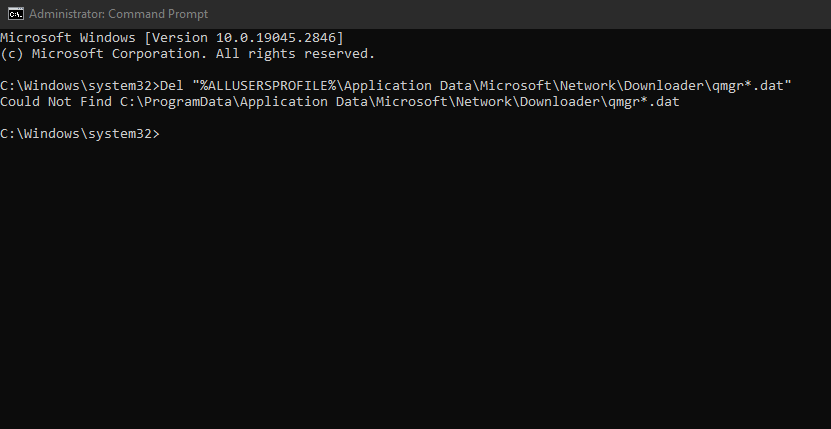
- Execute the commands below to rename the software distribution folders, pressing Enter after each line:
Ren %Systemroot%\SoftwareDistribution\DataStore DataStore.bak Ren %Systemroot%\SoftwareDistribution\Download Download.bak Ren %Systemroot%\System32\catroot2 catroot2.bak

- Reset BITS and the Windows Update service to their default security descriptors with the following commands, hitting Enter at the conclusion:
sc.exe sdset bits D:(A;CI;CCDCLCSWRPWPDTLOCRSDRCWDWO;;;SY)(A;;CCDCLCSWRPWPDTLOCRSDRCWDWO;;;BA)(A;;CCLCSWLOCRRC;;;IU)(A;;CCLCSWLOCRRC;;;SU) sc.exe sdset wuauserv D:(A;;CCLCSWRPLORC;;;AU)(A;;CCDCLCSWRPWPDTLOCRSDRCWDWO;;;BA)(A;;CCDCLCSWRPWPDTLOCRSDRCWDWO;;;SY)
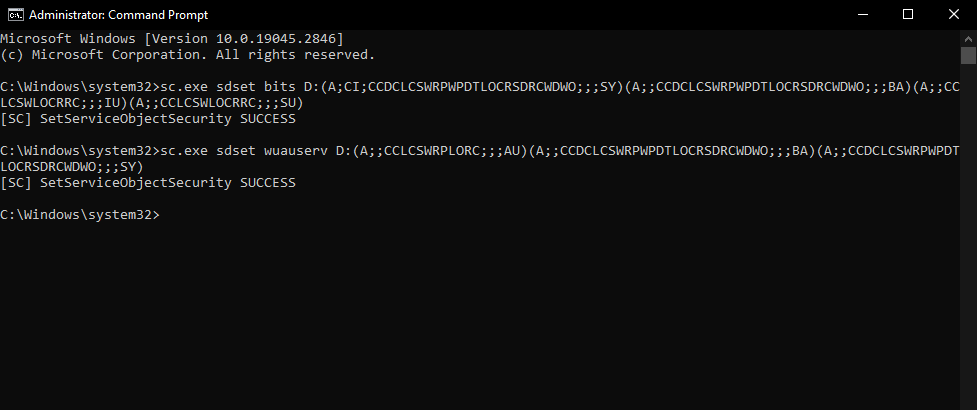
- Navigate to the System32 directory with this command:
cd /d %windir%\system32
- Re-register BITS and Windows Update files by entering the following commands in Command Prompt, pressing Enter after each one:
regsvr32.exe atl.dll regsvr32.exe urlmon.dll regsvr32.exe mshtml.dll regsvr32.exe shdocvw.dll regsvr32.exe browseui.dll regsvr32.exe jscript.dll regsvr32.exe vbscript.dll regsvr32.exe scrrun.dll regsvr32.exe msxml.dll regsvr32.exe msxml3.dll regsvr32.exe msxml6.dll regsvr32.exe actxprxy.dll regsvr32.exe softpub.dll regsvr32.exe wintrust.dll regsvr32.exe dssenh.dll regsvr32.exe rsaenh.dll regsvr32.exe gpkcsp.dll regsvr32.exe sccbase.dll regsvr32.exe slbcsp.dll regsvr32.exe cryptdlg.dll regsvr32.exe oleaut32.dll regsvr32.exe ole32.dll regsvr32.exe shell32.dll regsvr32.exe initpki.dll regsvr32.exe wuapi.dll regsvr32.exe wuaueng.dll regsvr32.exe wuaueng1.dll regsvr32.exe wucltui.dll regsvr32.exe wups.dll regsvr32.exe wups2.dll regsvr32.exe wuweb.dll regsvr32.exe qmgr.dll regsvr32.exe qmgrprxy.dll regsvr32.exe wucltux.dll regsvr32.exe muweb.dll regsvr32.exe wuwebv.dll
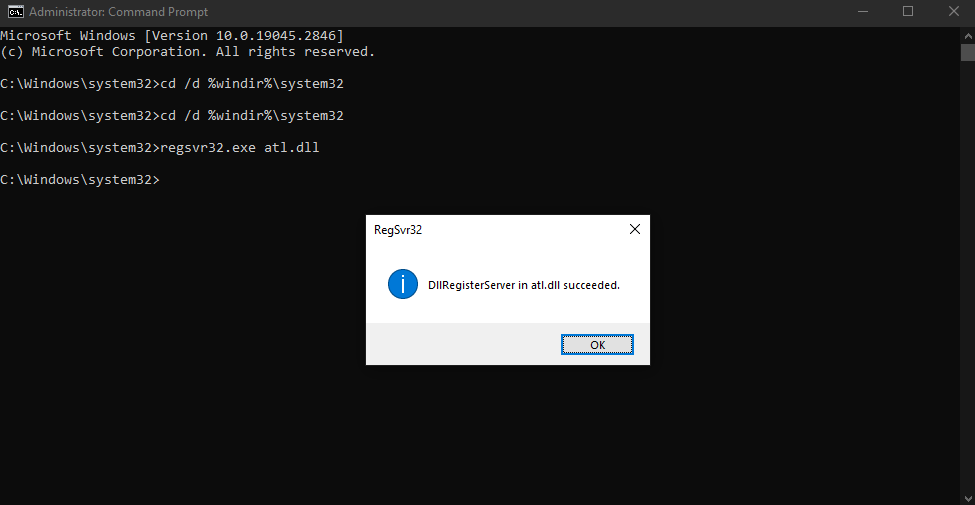
- Reset Winsock with this command:
netsh winsock reset
- If using Windows Server 2003 or Windows XP, configure proxy settings with:
proxycfg.exe -d
- Restart the BITS, Cryptographic, and Windows Update services by typing and running:
net start bits net start wuauserv net start cryptsvc
- Clear the BITS queue in Windows Server 2008 or Windows Vista with:
bitsadmin.exe /reset /allusers
5. Try a Clean Boot
Initiating a clean boot launches Windows with only essential programs and drivers, enabling you to check if a background program is the source of the installation failure.
- Search for “system configuration” and hit Enter.
- Check the Hide all Microsoft services box on the Services tab.
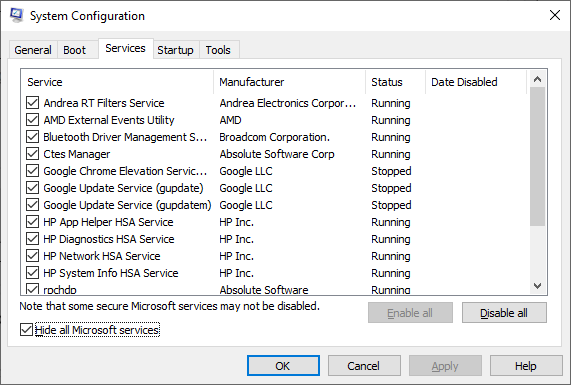
Try a Clean Boot - Press the Disable all button.
- Go to the Startup tab and click Open Task Manager.
- In the Task Manager, disable all third-party programs.
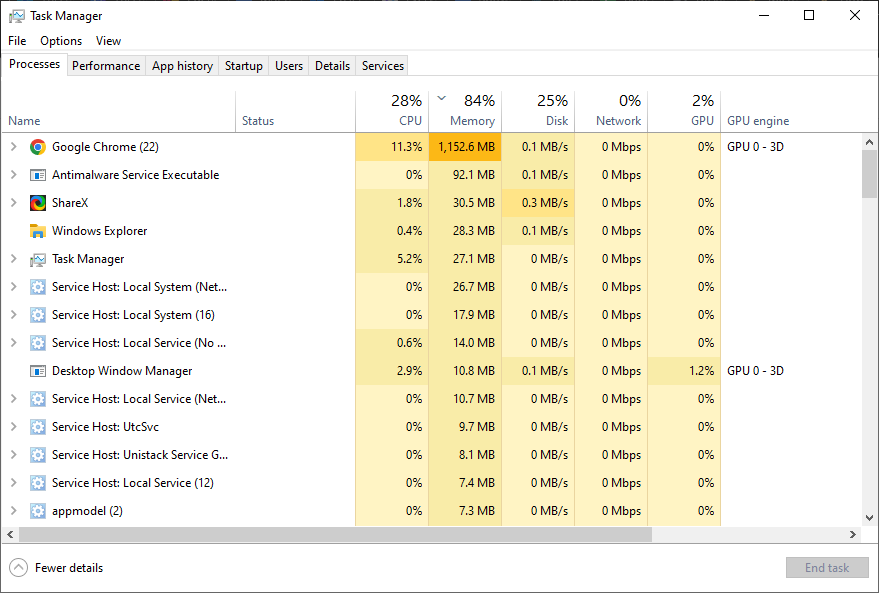
Try a Clean Boot - Restart your PC and verify if the clean boot resolved the update installation problem.
- If the issue is resolved, sequentially uninstall recently added applications to find the one causing the conflict.
6. Disable Third-Party Antivirus Software
Antivirus programs can occasionally disrupt the Windows Update process. Temporarily deactivating your antivirus might facilitate the installation of KB5011048. Remember to reactivate it later to safeguard your system.
- Launch the Start menu and search for “Windows Security”.
- Choose the Windows Security app from the search results, head to Virus & Threat Protection, and under this section, click on Manage settings.
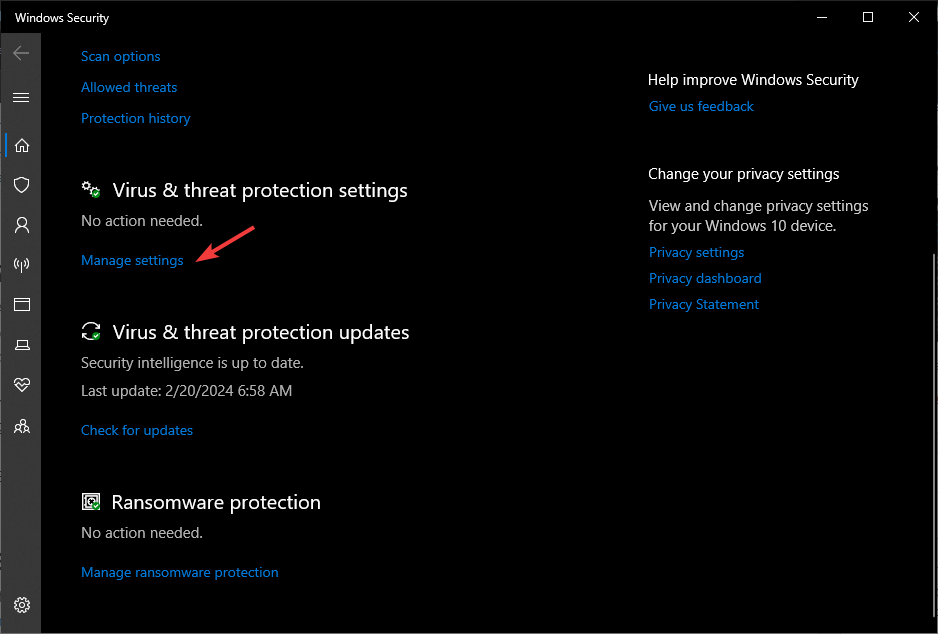
Disable Third-Party Antivirus Software - Toggle Real-time protection to Off. Note that this action will postpone scanning of downloaded or newly installed files until the next scheduled scan.
7. Use Installation Media
In cases where your Windows installation is corrupted, performing a repair installation might be necessary. Use installation media to reinstall Windows and then attempt the update process once more.
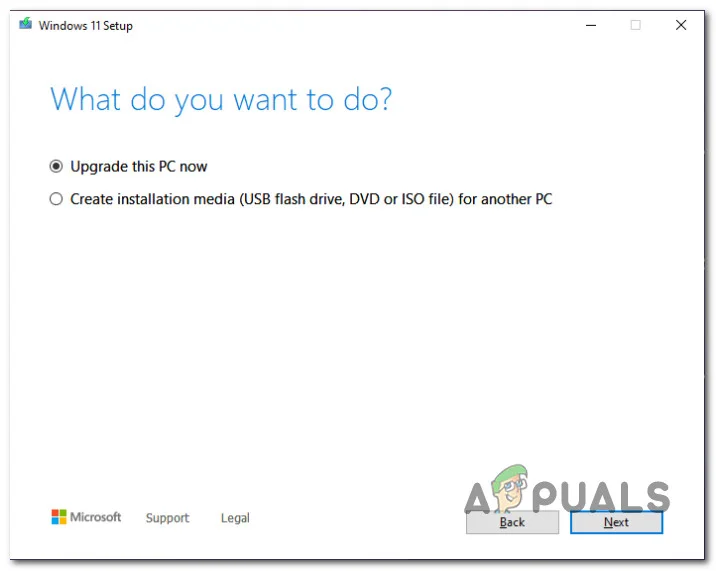
If you have exhausted these steps and still face problems with the KB5011048 installation on Windows 11/10, consider reaching out to the Microsoft support team for further assistance. Alternatively, you can leave a comment below, and one of our experts will respond to your query.





